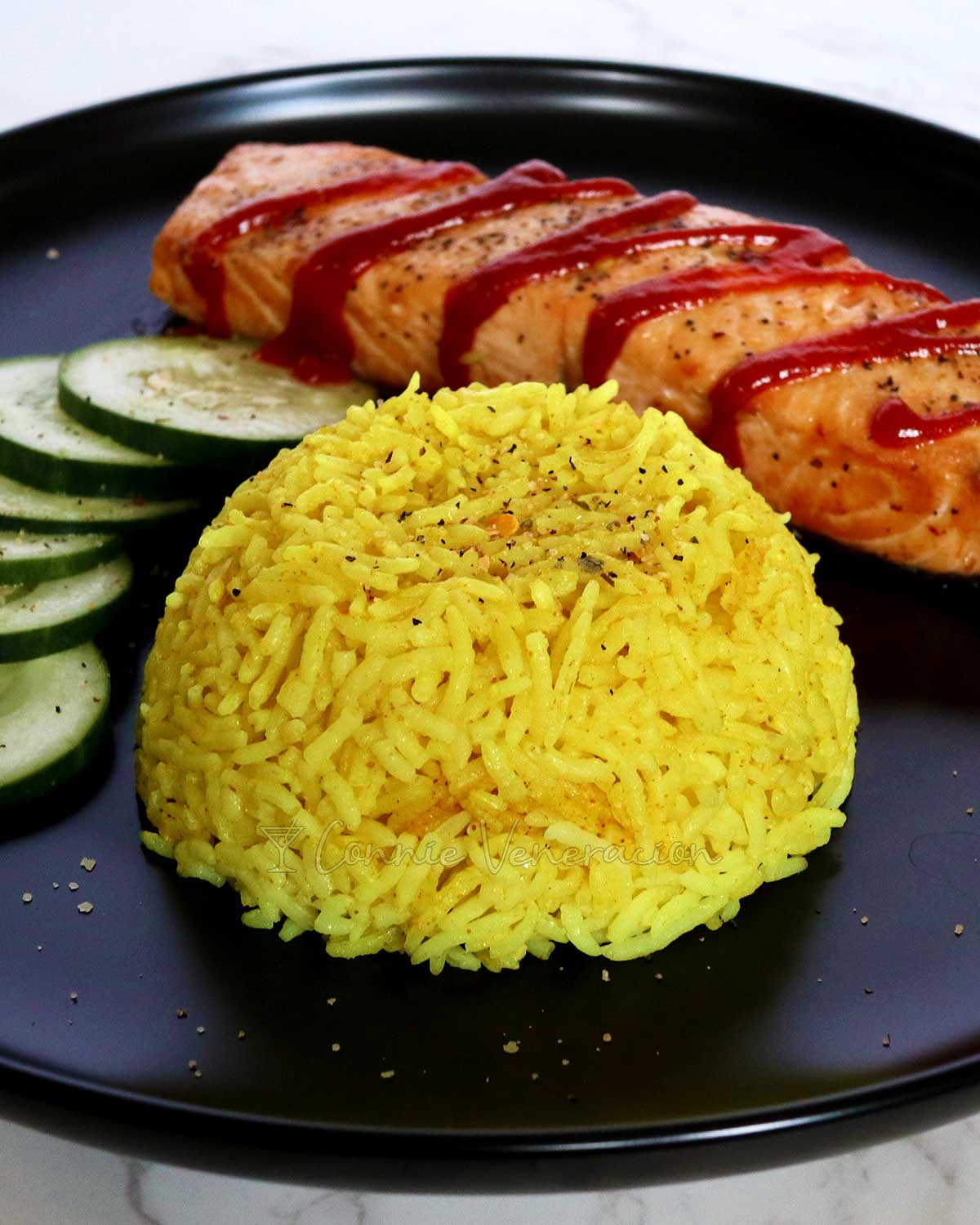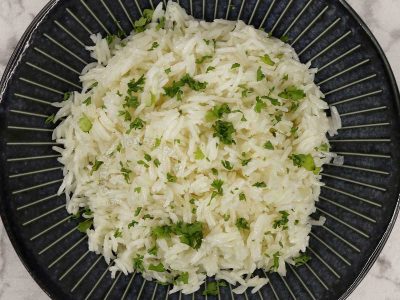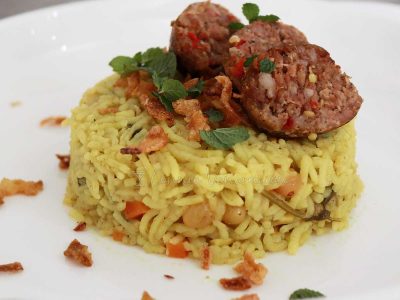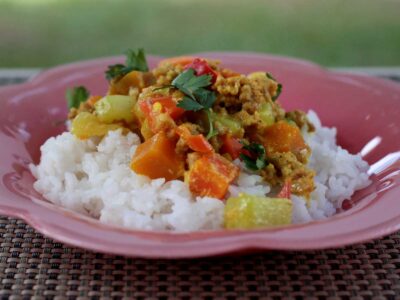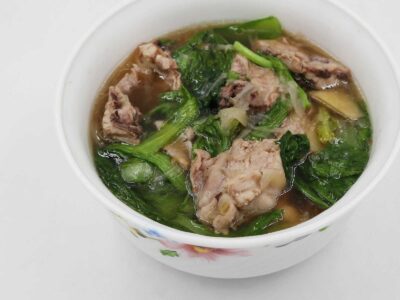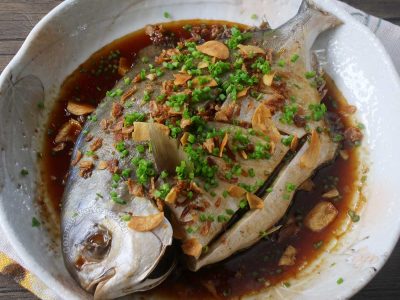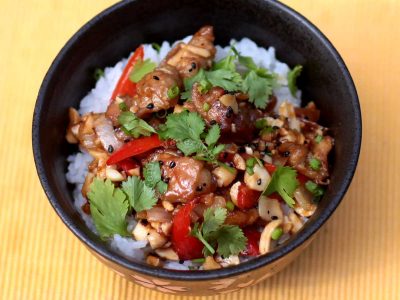What’s so special about nasi kuning apart from its visual appeal anyway? Well, if the color is not enough to catch your attention, the oh-so-inviting aroma will convince you that this rice dish is so much more than its lovely hue. The fragrance will convince you to try it and, after the first mouthful, you’ll know you want more.
Just how does nasi kuning smell? Spectacularly Southeast Asian. There’s a whiff of sweetness from the pandan leaves and the coconut milk. Lemongrass provides citrusy undertones. Galangal has a piney coolness that refreshes. And then, there’s the incomparable aroma of kaffir lime leaves.
Nasi kuning is not a dish you’ll want to pair with soups or stews. It’s best when served with fried or grilled food. The latter, especially, because the smokiness will blend with the creamy and subtle sweetness of the rice, and cause a flavor explosion in the mouth.
So, nasi kuning is a looker, it smells fantastic and it tastes delicious. But just how easy is it to cook? If you have the right ingredients, cooking is a breeze.
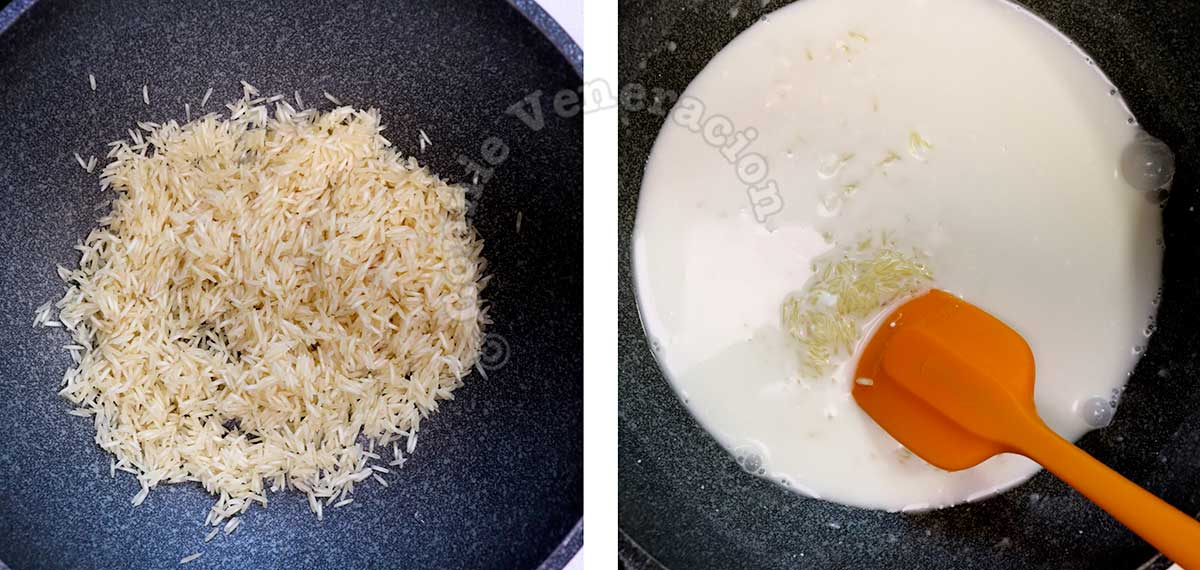
First, rinse the rice and drain. No short-grain rice here. Medium to long-grain rice is the way to go. If you haven’t discovered yet, the starchiness of rice is inversely proportional to the length of the grain. That means the longer the rice grains, the less starchy they are. And we want not-so-starchy rice to make nasi kuning so that the grains don’t clamp together while cooking in coconut milk.
The rinsed rice is then stirred with coconut milk. It’s coconut milk, not coconut cream. The thinner coconut milk has a higher water content which is needed to get the rice cooked.
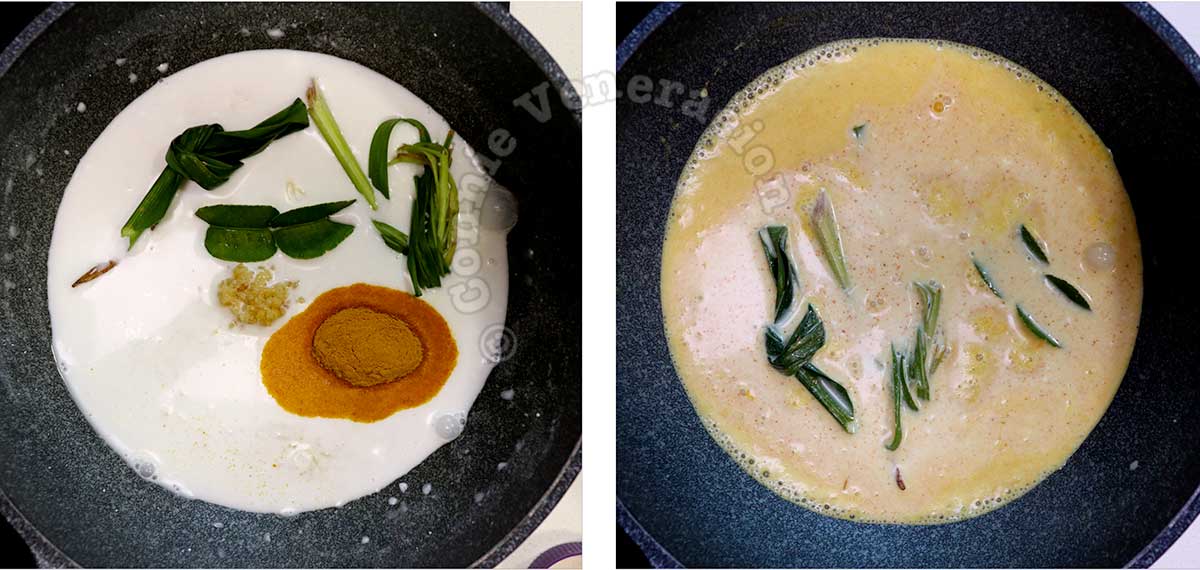
Next, the aromatics are added. Pandan leaves, lemongrass, turmeric, galangal and kaffir lime leaves. The mixture is allowed to boil gently before the heat is lowered and the pan is covered.
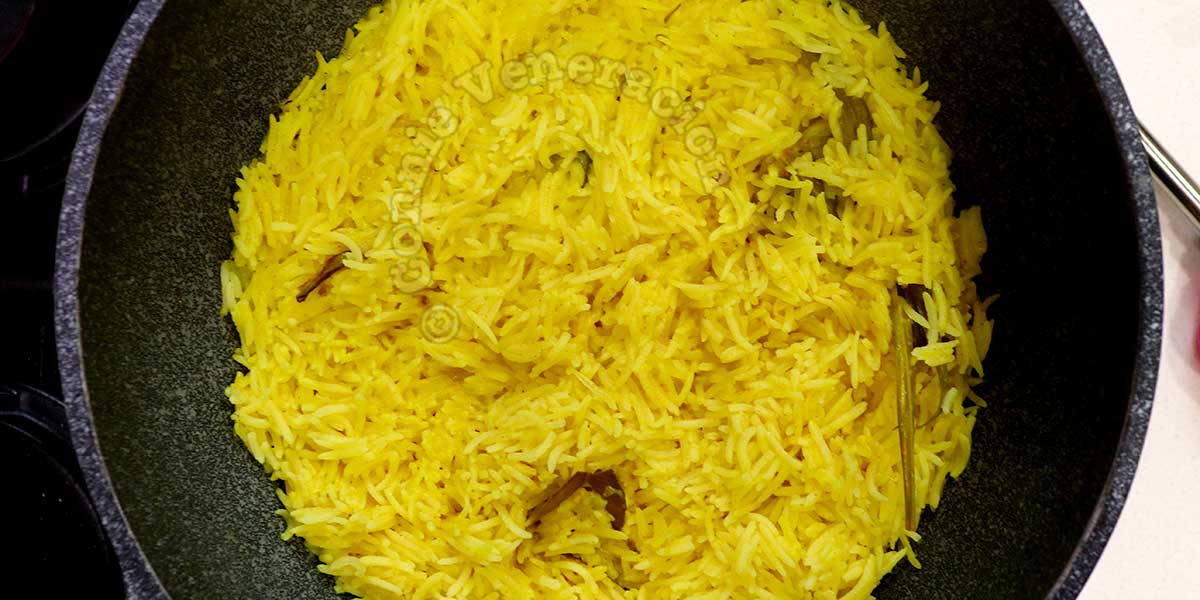
As the rice absorbs the coconut milk, it will also soak up the flavors of the herbs and spices, and acquire the color of the turmeric.
Indonesian yellow rice (nasi kuning)
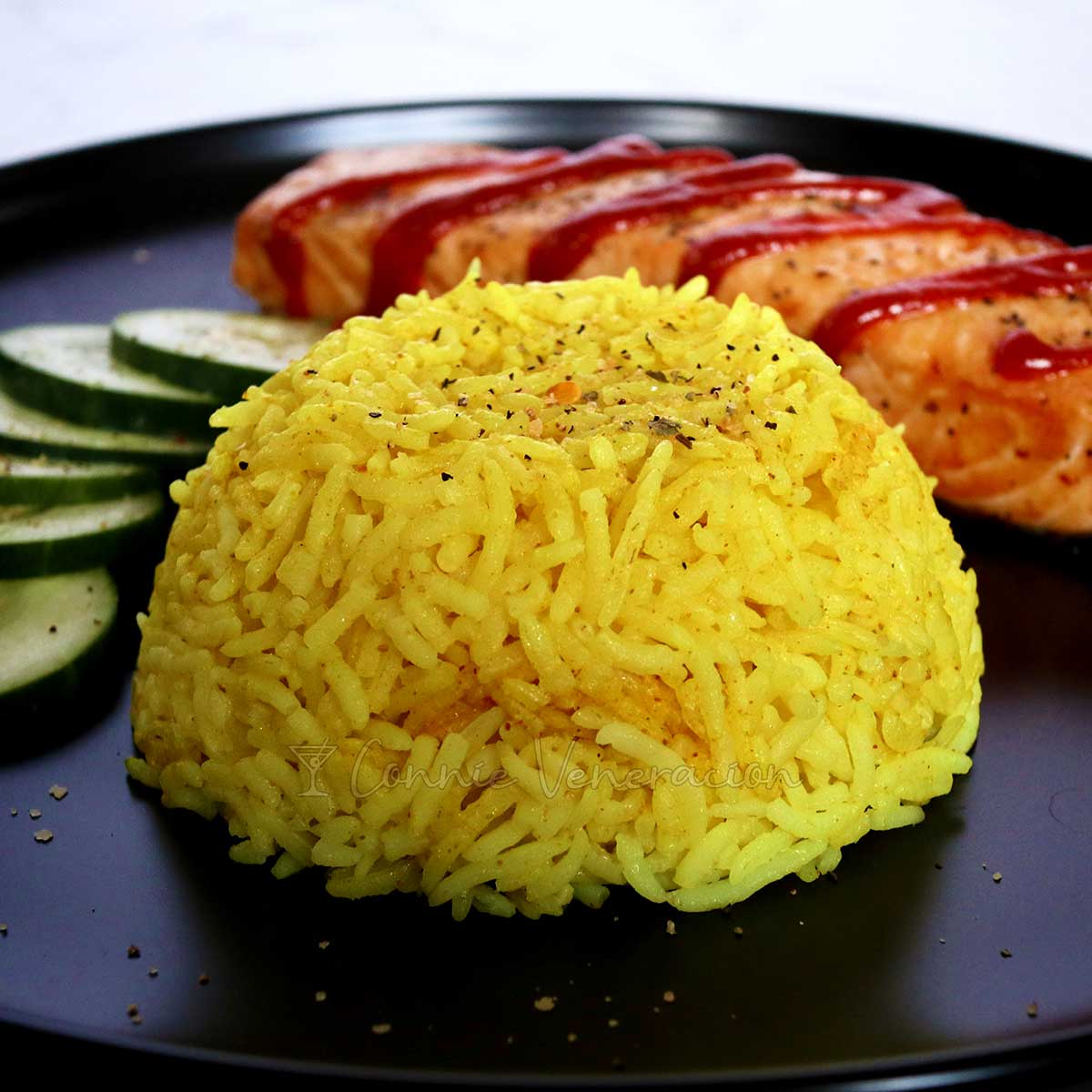
Ingredients
- 1 cup medium to long-grain rice rinsed and drained well
- 2 cups coconut milk you may need more
- 1 stalk lemongrass tied into a knot
- 1 pandan leaf tied into a knot
- 1 pair kaffir lime leaves
- ¼ teaspoon chopped galangal
- ½ teaspoon salt
- 1 tablespoon tumeric powder
Instructions
- Dump the rinsed and drained rice in a pan and stir in the coconut milk.
- Add the lemongrass, pandan leaf, kaffir lime leaves, galangal, salt and turmeric, and stir to dissolve the turmeric powder in the coconut milk.
- Bring to a gentle boil, lower the heat and cover the pan.
- Cook until the rice has absorbed all the coconut milk.
- Fluff up the rice with a fork, cover the pan once more and leave to continue cooking in the residual heat for another five minutes.

